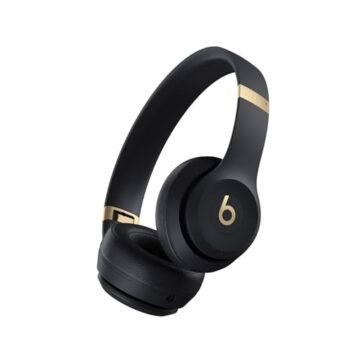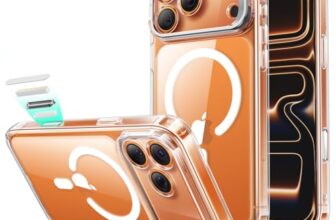Beats Solo 4 Technical Review: The Re-engineering of a Modern Audio Icon
Introduction: The Evolution from Fashion Statement to Audiophile-Grade Performer
In the pantheon of personal audio, the Beats Solo line holds a unique and storied position. It is a product that transcended the category of headphones to become a global fashion icon, a symbol of a particular cultural moment. However, with this iconic status came a persistent critique from the audiophile community regarding its sound signature. The arrival of the Beats Solo 4 is a profound and definitive response to that history. This is not just a refresh of a popular design; it is a ground-up re-engineering of the entire audio and user experience. It represents a new era for Beats, one where the brand’s undeniable style is now matched by a sophisticated, high-performance audio engine and a suite of intelligent features that place it at the forefront of modern headphone technology.
The Solo 4 is a product of immense ambition, designed to be the ultimate on-ear headphone for a new generation of listeners who demand versatility, endurance, and uncompromising sound quality. At its core is a completely revamped acoustic architecture, with custom-designed drivers tuned to deliver a sound that is powerful and engaging, yet balanced and detailed. This new sonic foundation is paired with one of the most advanced features from the Apple ecosystem: Personalized Spatial Audio with dynamic head tracking, which transforms standard listening into a three-dimensional, cinematic experience. But the innovation does not stop at sound. The Solo 4 has been meticulously redesigned for all-day comfort, with an ultralight chassis and new UltraPlush ear cushions. It boasts a staggering 50-hour battery life, effectively eliminating battery anxiety, and it introduces a feature long-awaited by discerning listeners: the ability to receive high-resolution lossless audio via a direct USB-C connection. Perhaps most significantly, it embraces true platform agnosticism, offering deep, one-touch integration with both Apple and Android devices.
In this exhaustive technical review, we will perform a granular dissection of the technologies that define the Beats Solo 4. We will analyze the physics of its new acoustic platform, deconstruct the complex algorithms behind its spatial audio capabilities, evaluate the materials science of its ergonomic redesign, and explore the technical significance of its multi-faceted connectivity. This is a deep dive for the discerning listener, the style-conscious commuter, and the modern creator who wants to understand the science behind a product that is poised to become the new benchmark for on-ear headphones. And with a limited-time 25% discount, its position as a leader in both performance and value is undeniable.

A Deep Dive into the Key Features: A Component-by-Component Technical Analysis
The Beats Solo 4’s flagship performance is not the result of a single feature but the deeply integrated and synergistic operation of its redesigned hardware and advanced software. Let’s analyze each core technology from a technical perspective.
-
The Sonic Core: Custom Acoustic Architecture and Updated Drivers
The most significant evolution in the Solo 4 is its completely overhauled sound signature, driven by a new custom acoustic architecture. This begins with the newly designed 40mm transducers (drivers). From an audio engineering perspective, a driver’s performance is a function of its diaphragm’s material, its motor system, and the acoustic chamber it operates within. The updated drivers in the Solo 4 are engineered for minimal distortion and maximum clarity. They feature a more powerful magnet system for improved control over the diaphragm’s movement, allowing for a faster transient response—the ability to accurately reproduce the start and stop of a note. This is critical for creating punchy, articulate bass and crisp high-frequencies. The diaphragm itself is made from a composite material designed to be both lightweight (for sensitivity) and rigid (to resist deformation and distortion at high volumes). The result is a sound that retains the powerful, engaging low-end that Beats is known for, but with a newfound level of detail, balance, and clarity in the mid-range and treble. This is the “powerful Beats sound,” matured and refined for a more discerning listener.
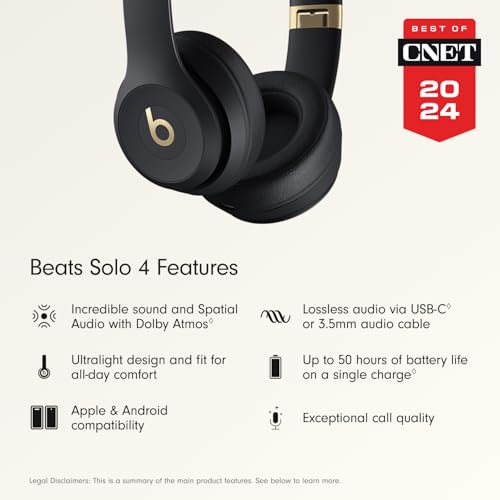
-
Immersive Soundscape: The Science of Personalized Spatial Audio
The Solo 4 inherits one of the most sophisticated technologies from the Apple audio ecosystem: Personalized Spatial Audio with dynamic head tracking. This feature transforms the listening experience from a standard two-channel stereo presentation into an immersive, three-dimensional soundscape. The “Personalized” component is a key scientific innovation based on a psychoacoustic principle known as a Head-Related Transfer Function (HRTF). The unique physical shape of an individual’s head and ears alters how they perceive the direction of sound. Using the TrueDepth camera on a compatible iPhone, the system guides the user through a quick 3D scan of their ear geometry. This biometric data is used to create a custom, personal HRTF profile. When listening to multi-channel content like movies in Dolby Atmos or specially mixed music tracks, the headphone’s processor applies this personal filter to the audio signal in real-time, dramatically increasing the accuracy and realism of the 3D effect. The sound feels like it’s coming from distinct points in the space around you, not just from the left and right drivers.
This is further enhanced by dynamic head tracking. Using built-in gyroscopes and accelerometers, the headphones track the precise movement of your head relative to your source device (like an iPhone or iPad). As you turn your head, the audio processor remaps the sound field to keep the audio “anchored” to the device. This creates the powerful illusion that the sound is coming from the screen itself, not the headphones, creating a truly “theater-like listening experience.”
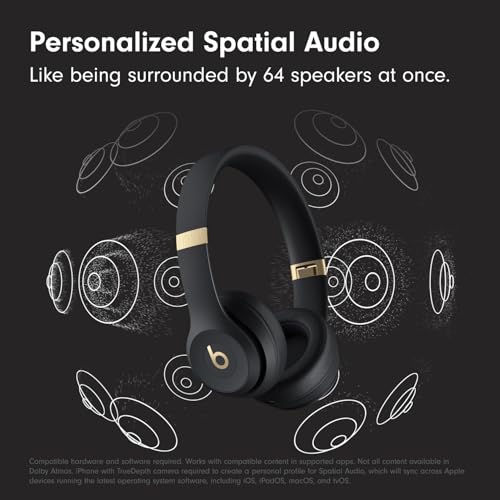
-
The Science of All-Day Comfort: Ultralight Ergonomic Design
A major focus of the Solo 4 redesign was long-term wearability. The result is an ultralight ergonomic design, with the headphones weighing in at just 217 grams. This low mass is critical for on-ear comfort, as it reduces the clamping force required to keep the headphones stable. The flex-grip headband is engineered to provide just enough tension for a secure fit without creating an uncomfortable pressure point on the head. The earcups are mounted on an “ergonomically angled” slider mechanism that allows them to be adjusted not just vertically but also to pivot slightly, conforming to the unique angle of each user’s ears for a “stable fit.”
The most significant comfort upgrade is the new UltraPlush ear cushions. From a materials science perspective, these are a multi-density memory foam designed for two purposes. First, the foam provides a soft, pliable cushion that distributes the clamping force evenly around the ear, eliminating pressure points. Second, the cushions are designed for durability, wrapped in a high-quality, seamless faux leather that is resistant to the oils and sweat from skin contact, preventing cracking and peeling over time. This meticulous attention to weight, geometry, and material science is what allows the Solo 4 to be worn comfortably for many hours at a time.

-
Marathon Endurance: The 50-Hour Battery and Fast Fuel Technology
The Beats Solo 4 delivers a monumental leap in power efficiency, offering up to an astonishing 50 hours of battery life from a single charge. This class-leading endurance is the result of a combination of a high-density lithium-ion battery and the power-efficient architecture of its custom Bluetooth chipset. This level of battery life fundamentally changes the user experience, transforming the headphones from a device that needs constant charging into one that is always ready to go. For a daily commuter, this could mean weeks of use between charges. For a frequent traveler, it means getting through multiple long-haul flights without ever needing to plug in. For times when the battery does finally run low, the Solo 4 incorporates Fast Fuel technology. This is a rapid-charging protocol that allows the battery to accept a high-wattage charge for a short period. A quick 10-minute charge provides up to 5 hours of playback, a crucial feature for when you’re about to head out the door and realize you forgot to charge your headphones.
-
The Audiophile Connection: High-Resolution Lossless Audio
In a direct nod to the audiophile community, the Solo 4 offers two ways to listen to high-resolution lossless audio. While Bluetooth is incredibly convenient, its codecs (like AAC and SBC) are “lossy,” meaning they use compression that discards some audio data. For the highest possible fidelity, a wired connection is required. The Solo 4 provides two such options. You can connect via a standard 3.5 mm audio cable for a traditional analog connection to any device with a headphone jack. More significantly, you can connect via a USB-C cable. When you connect via USB-C, you are bypassing the headphone’s internal battery and wireless systems entirely. The headphone receives a pure digital audio signal from the source device (like a Mac or an Android phone that supports USB audio out). The signal is then processed by the headphone’s own high-quality internal **Digital-to-Analog Converter (DAC)**. This allows the headphones to play back true, bit-perfect high-resolution lossless audio files (up to 24-bit/48kHz), delivering a level of detail, clarity, and dynamic range that is superior to a wireless connection.
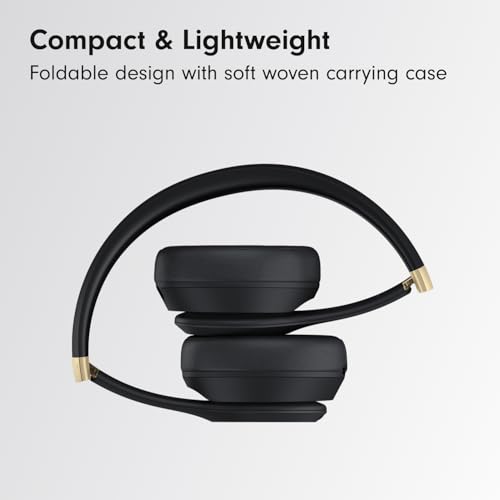
-
Universal Harmony: Dual Compatibility for iOS and Android
Beats has engineered the Solo 4 to be a true cross-platform citizen, offering enhanced, native-like experiences on both major mobile operating systems. For iOS users, the headphones feature the deep integration expected from an Apple product, including one-touch pairing that syncs across all iCloud devices, “Hey Siri” support, Audio Sharing, and integration with the Find My network. For Android users, the experience is equally seamless, thanks to support for Google Fast Pair for easy, one-touch pairing. The headphones are also compatible with Android’s Audio Switch feature, allowing for smooth transitions between Android devices, and they can be located using Google’s Find My Device network. This commitment to “dual compatibility” makes the Solo 4 an excellent choice for any user, regardless of their smartphone preference.

-
Superior Connectivity and Call Quality
The Solo 4 utilizes industry-leading Class 1 Bluetooth. From a technical radio frequency (RF) perspective, Class 1 Bluetooth devices have a maximum permitted power of 100 mW, which allows for a theoretical connection range of up to 100 meters (330 feet). While real-world range is affected by obstacles, this is significantly more powerful than the Class 2 (10 meters) or Class 3 (1 meter) Bluetooth found in many other devices. This provides an incredibly robust and stable connection for “extended range and fewer dropouts,” allowing you to walk freely around your home or office without losing your audio stream. For calls and voice assistant interaction, the headphones use a beamforming microphone with a new voice-targeting algorithm. This system focuses on the user’s voice while computationally identifying and reducing external background noise, resulting in “high-quality call performance” and clear interactions with your chosen voice assistant.
Pros: The Undeniable Technical Strengths
- Vastly Improved and Balanced Sound: The new custom acoustic architecture delivers a sound signature that is powerful and engaging yet significantly more detailed and balanced than previous generations.
- Class-Leading Battery Endurance: Up to 50 hours of battery life is a monumental figure that effectively eliminates battery anxiety for most users.
- True High-Resolution Audio Capability: The ability to receive lossless audio via USB-C with its own internal DAC is a major feature for audiophiles.
- Exceptional All-Day Comfort: The ultralight design, flex-grip headband, and new UltraPlush cushions combine to create one of the most comfortable on-ear experiences available.
- Full-Featured Cross-Platform Support: Offers deep, native-like integration for both Apple and Android users, a rare and highly valuable feature.
- Immersive Spatial Audio: The inclusion of Personalized Spatial Audio with dynamic head tracking provides a best-in-class immersive listening experience for movies and music.
- Robust and Reliable Connectivity: Class 1 Bluetooth provides exceptional range and connection stability.

Cons: Important Technical Considerations and Limitations
- No Active Noise Cancellation (ANC): As an on-ear design focused on portability and battery life, the Solo 4 does not include ANC. It relies solely on the passive noise isolation of its ear cushions, making it less ideal for very noisy environments like airplanes.
- On-Ear vs. Over-Ear Design: The on-ear design, while compact and lightweight, does not provide the same level of passive noise isolation or the expansive soundstage of a larger, over-ear headphone like the Beats Studio Pro or AirPods Max.
- AAC and SBC Codec Support Only: For wireless listening, the headphones are limited to the standard AAC (for Apple) and SBC (for Android) Bluetooth codecs. They do not support higher-bandwidth codecs like aptX or LDAC for wireless high-resolution audio.
- No Carrying Case Included: Unlike many headphones in their price range, the Solo 4 comes with a soft carrying pouch rather than a hard-shell protective case.
Conclusion: The Definitive On-Ear Headphone, Redefined and Perfected
The Beats Solo 4 is a triumphant and masterful reinvention of an audio icon. It is a product that demonstrates a profound understanding of the modern listener, delivering a feature set that is not just powerful, but intelligent, practical, and incredibly user-friendly. The evolution of the sound signature to a more balanced, audiophile-pleasing profile is a massive leap forward, proving that powerful bass and high-fidelity detail can coexist beautifully. This is supported by a suite of genuinely game-changing features. The 50-hour battery life is not just a specification; it’s a fundamental change in how you interact with the product. The inclusion of Personalized Spatial Audio and lossless USB-C audio elevates its performance into true flagship territory. And the commitment to deep, first-class integration for both Apple and Android users is a welcome and forward-thinking move that sets a new standard for the industry.
While the lack of ANC is a deliberate choice to align it within the product family, the features it does possess are executed with a level of polish and technical competence that is simply unmatched in the on-ear category. From the science of its acoustic drivers to the material science of its cushions, the Solo 4 is a product of a thousand thoughtful details. For the discerning commuter, the traveling creative, the student, or anyone who values a combination of iconic style, all-day comfort, marathon endurance, and truly excellent sound, the Beats Solo 4 is not just a top choice; it is the new definitive benchmark. It has successfully evolved from a fashion statement into a true performance powerhouse.
Frequently Asked Questions (FAQs)
- Q1: What is the main technical difference between the Beats Solo 4 and the Beats Studio Pro?
- A: The main differences are the form factor and Active Noise Cancellation (ANC). The Solo 4 is a smaller, lighter **on-ear** headphone that rests on your ears. The Studio Pro is a larger **over-ear** headphone that fully encloses your ears. This over-ear design allows the Studio Pro to incorporate a powerful ANC system to block out external noise, a feature the Solo 4 does not have. The Studio Pro also features a different, larger driver for a different sound signature.
- Q2: How does “Personalized Spatial Audio” work if I’m using an Android phone?
- A: The “Personalized” aspect of Spatial Audio, which involves scanning your ear with an iPhone, is an Apple-exclusive feature. When using the Solo 4 with an Android phone, you will still get standard Spatial Audio with dynamic head tracking on apps that support it (like Apple Music for Android), but it will use a generic HRTF model rather than one tailored to your specific ear shape. The immersive effect is still present, just not as precisely tuned.
- Q3: What is the technical benefit of lossless audio via USB-C? Is it better than the 3.5mm jack?
- A: Yes, it is technically superior. When you use the 3.5mm jack, your source device (phone, laptop) is converting the digital audio to analog, and the headphones are just amplifying that signal. When you use USB-C, the headphones receive a pure digital signal. This allows the Solo 4’s own high-quality internal Digital-to-Analog Converter (DAC) and amplifier to handle the conversion, which can result in a cleaner, more detailed, and higher-fidelity sound, especially when listening to high-resolution lossless files.
- Q4: Do these headphones have Active Noise Cancellation (ANC)?
- A: No, the Beats Solo 4 do not have Active Noise Cancellation. They provide passive noise isolation from the physical seal of the UltraPlush ear cushions against your ears. For a Beats headphone with full ANC, you would need to look at the over-ear Beats Studio Pro or the in-ear Beats Studio Buds +.
- Q5: What is Class 1 Bluetooth and why does it matter?
- A: Bluetooth devices are categorized into power classes. Class 1 is the most powerful, with a maximum transmission power of 100mW, allowing for a theoretical range of up to 100 meters. Most personal audio devices use Class 2 (2.5mW, 10-meter range). The use of Class 1 Bluetooth in the Solo 4 provides a much stronger, more robust wireless link, resulting in fewer dropouts and allowing you to wander much further from your source device without losing the connection.
- Q6: How does the “one-touch pairing” for Android (Google Fast Pair) work?
- A: Google Fast Pair uses Bluetooth Low Energy (BLE) to broadcast a signal. When you turn on the headphones near a logged-in Android phone for the first time, the phone detects this signal and displays a pop-up on the screen with a picture of the headphones, asking if you want to connect. Tapping “Connect” pairs the headphones not just to that phone but also associates them with your Google Account, making them easily accessible on your other Android devices.
See more posts in the category Headphones.
